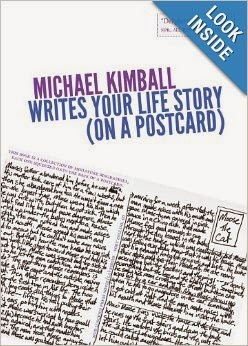Every now and then I manage to talk a small press author into showing us a little skin... tattooed skin, that is. I know there are websites and books out there that have been-there-done-that already, but I hadn't seen one with a specific focus on the authors and publishers of the small press community. Whether it's the influence for their book, influenced by their book, or completely unrelated to the book, we get to hear the story behind their indie ink....
Today's ink story comes from Nik Korpon. Nik Korpon is the author of Stay God, Sweet Angel; Fight Card: Punching Paradise; Bar Scars: Stories; By the Nails of the Warpriest; and Old Ghosts. His stories have ruined the reputation of Needle, Noir Nation, Out of the Gutter, Shotgun Honey, and Yellow Mama, among others, and he is an associate editor at Dark House Press. He lives in Baltimore with his wife and kids. Give him some danger, little stranger, at nikkorpon.com.
I’d been getting tattooed and hanging out in shops since I was 19, so after I finished my book Stay God (now Stay God, Sweet Angelwith an additional, origin-story novella), a celebratory tattoo was sort of a given. I hadn’t yet sold the book, but that wasn’t the point. It was more a matter of marking that moment, the culmination of six weeks of fourteen- to sixteen-hour writing days. That was the most euphoric period I’ve ever typed. Only problem was, I was living in London when I wrote the book and all my artist friends were back in Baltimore. There are a ton of great shops in London and any number of them would have made a great tattoo on me, but this wasn’t just some banger I’d wanted because I was bored (and I do have a couple too many of those).
One of the overarching themes of the book is the various incarnations of family. It could be argued that the book is also a love story, a la Hot Fuzz, between Christian and Damon, the two mains. (I did also get the bloody cricket bat from Shaun of the Dead, though that’s a different story.) It could also be said that Christian and Damon are based largely on myself and my best friend, Christian, though I am the one who usually talks us out of whatever trouble he gets us into. So I thought it would be appropriate if Christian, who is also a phenomenally talented tattoo artist, did my book tattoo. In the interim, I got tattooed at Frith Street tattoo, settling on a chainsaw for my then-girlfriend/now-wife because our first date was Texas Chainsaw Massacre.
Once back in Baltimore, Christian drew up a cool little black jet in honor of Jet Black Records, the shop the character Christian runs. (The name itself was a reference to a song on Jawbreaker’s Dear You, an album that became the soundtrack to many of our road trips.) It’s a small tattoo that is frequently lost in the clutter of my arms, but it’s one of my favorites.









































